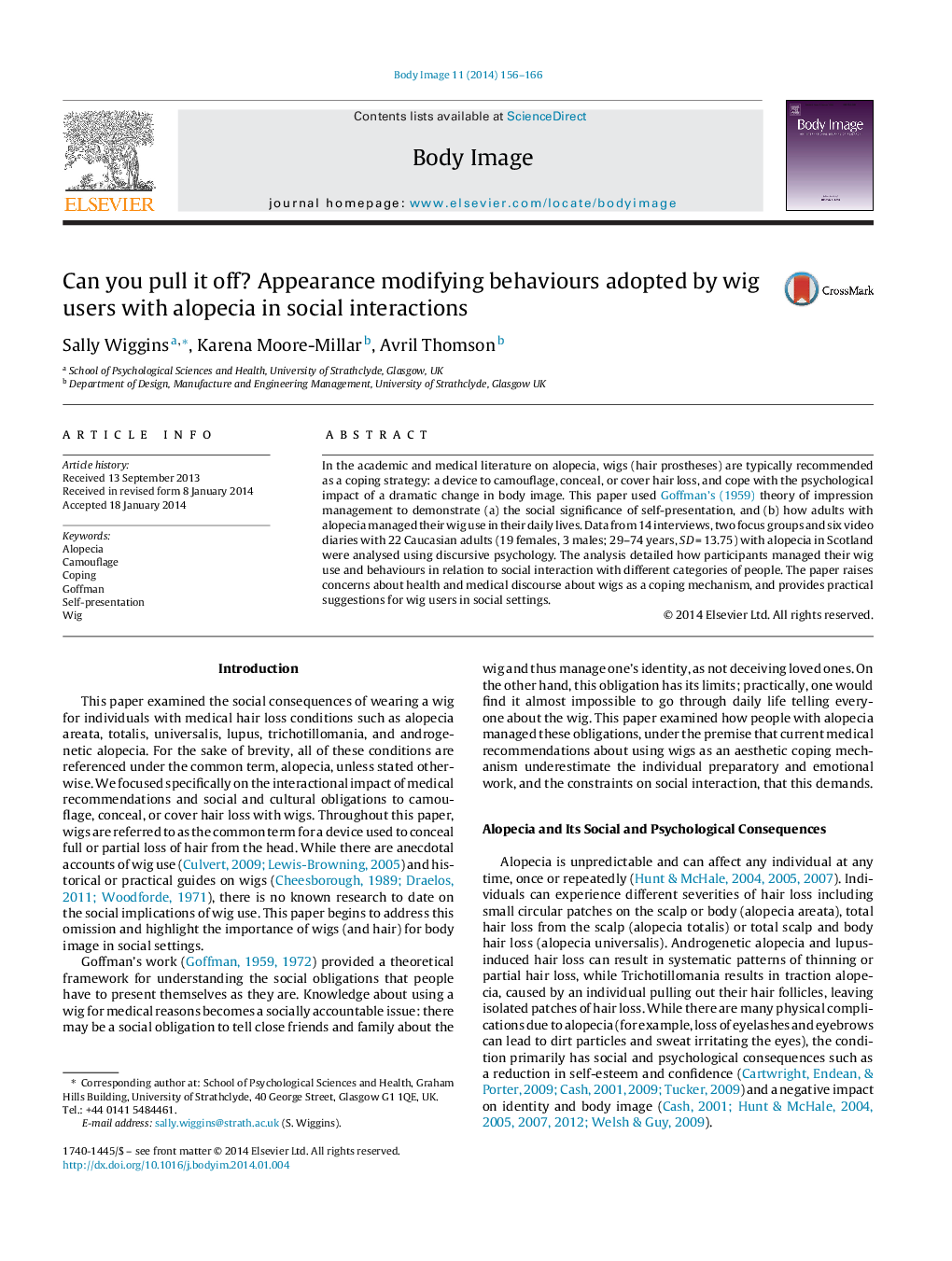| Article ID | Journal | Published Year | Pages | File Type |
|---|---|---|---|---|
| 902747 | Body Image | 2014 | 11 Pages |
•Using wigs to cover hair loss underestimates social obligations not to be “fake.”•Different categories of people have rights to see, notice, and comment on the wig.•Alopecia wig users need to adopt appearance-modifying behaviours in social settings.
In the academic and medical literature on alopecia, wigs (hair prostheses) are typically recommended as a coping strategy: a device to camouflage, conceal, or cover hair loss, and cope with the psychological impact of a dramatic change in body image. This paper used Goffman's (1959) theory of impression management to demonstrate (a) the social significance of self-presentation, and (b) how adults with alopecia managed their wig use in their daily lives. Data from 14 interviews, two focus groups and six video diaries with 22 Caucasian adults (19 females, 3 males; 29–74 years, SD = 13.75) with alopecia in Scotland were analysed using discursive psychology. The analysis detailed how participants managed their wig use and behaviours in relation to social interaction with different categories of people. The paper raises concerns about health and medical discourse about wigs as a coping mechanism, and provides practical suggestions for wig users in social settings.
